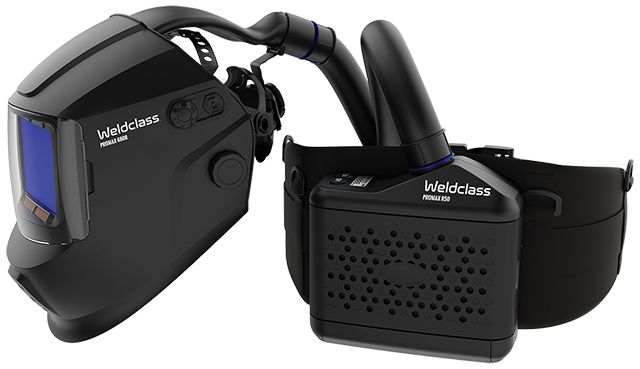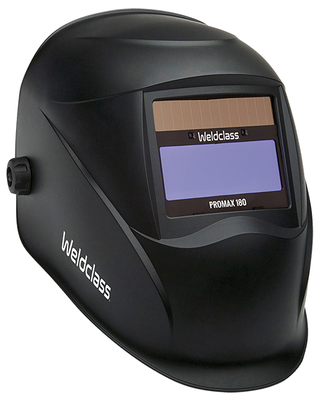Welding is an essential process in metalworking, construction, and fabrication. However, it also involves risks such as sparks, heat, and harmful UV radiation. To ensure safety and efficiency, welders must use proper protective gear, including a welding blanket and a welding helmet. These tools play a crucial role in preventing burns, injuries, and exposure to hazardous elements.
Importance of Welding Safety Equipment
Safety should always be a top priority for anyone involved in welding. The intense heat and bright light produced during welding can cause serious injuries if proper precautions are not taken. A welding helmet protects the welder's face and eyes from ultraviolet (UV) and infrared (IR) radiation, while a welding blanket shields the surrounding area from sparks and molten metal. Investing in high-quality protective gear enhances safety and ensures compliance with industry standards.
Welding Blanket: A Must-Have for Protection
A welding blanket is a fire-resistant fabric designed to protect equipment, workers, and the workplace from welding sparks and splatter. Made from heat-resistant materials like fiberglass, silica, or leather, welding blankets create a protective barrier, reducing the risk of fire hazards.
Benefits of Using a Welding Blanket
Prevents Fire Hazards – Welding blankets act as a flame-resistant shield, preventing sparks from igniting nearby materials.
Protects Work Surfaces – They prevent damage to surrounding surfaces, including floors, walls, and machinery.
Enhances Worker Safety – By creating a protective barrier, welding blankets reduce the risk of burns and injuries.
Versatile Applications – They are useful for various welding processes, including MIG, TIG, and stick welding.
Durable and Long-Lasting – High-quality welding blankets are designed to withstand extreme temperatures and offer long-term protection.
Choosing the Right Welding Blanket
Selecting the right welding blanket depends on factors such as heat resistance, material type, and size. Fiberglass welding blankets are commonly used for general welding applications, while silica blankets offer higher heat resistance for extreme conditions. Leather welding blankets provide additional durability and flexibility. When purchasing a welding blanket, ensure it meets industry safety standards and is suitable for the specific welding task.
Welding Helmet: Essential Eye and Face Protection
A welding helmet is a critical piece of personal protective equipment (PPE) that protects welders from harmful light, sparks, and debris. Without a welding helmet, exposure to intense light and radiation can cause serious eye conditions, including “arc eye” or photokeratitis.
Advantages of Using a Welding Helmet
Protects Eyes and Face – A welding helmet shields against UV and IR radiation, preventing vision damage and skin burns.
Reduces Eye Strain – Auto-darkening welding helmets adjust to light intensity, reducing eye fatigue during prolonged welding sessions.
Improves Work Efficiency – A good welding helmet allows for better visibility and precision while working.
Prevents Accidents – By providing full-face coverage, welding helmets minimize the risk of sparks and debris injuries.
Comfort and Convenience – Modern welding helmets are lightweight and ergonomically designed for extended wear.
Selecting the Best Welding Helmet
When choosing a welding helmet, consider factors such as lens type, weight, and comfort. Auto-darkening helmets offer superior protection and convenience by automatically adjusting the lens shade according to the welding arc brightness. Fixed-shade helmets are more affordable and ideal for consistent welding tasks. Additionally, ensure the helmet fits securely and meets safety regulations such as ANSI Z87.1 for optimal protection.
Proper Maintenance of Welding Blanket and Welding Helmet
To extend the lifespan and effectiveness of welding safety gear, regular maintenance is essential.
Caring for a Welding Blanket
Clean Regularly – Remove dust, debris, and welding residues to maintain its fire-resistant properties.
Store Properly – Keep the blanket in a dry, cool place to prevent degradation.
Inspect for Damage – Check for burns, tears, or wear and replace if necessary.
Maintaining a Welding Helmet
Clean the Lens – Wipe the lens frequently to ensure clear visibility.
Check for Cracks – Inspect the helmet shell and lens for any signs of damage.
Replace Batteries – If using an auto-darkening helmet, ensure the battery is functional for optimal performance.
Conclusion
Welding safety gear, such as a welding blanket and welding helmet, is essential for protecting workers and ensuring a safe working environment. Investing in high-quality protective equipment minimizes risks and enhances overall efficiency. Whether you are a professional welder or a beginner, prioritizing safety with the right gear is crucial. Always choose welding blankets and helmets that meet industry standards, and maintain them properly for long-lasting protection. By taking these precautions, you can enjoy a safer and more productive welding experience.







